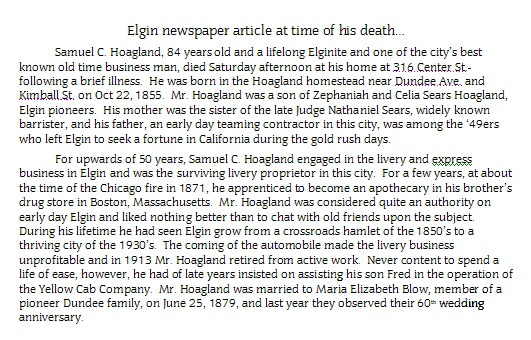Elgin Pioneers
Jane May (Hoagland) Bailey (1881 – 1986): Possunt quia posse videntur
The Press Democrat
Santa Rosa, California
December 20, 1981
Page 21
***
20th Century woman still one who can
By Celia Ersland
***
Jane Bailey’s motto in high school was “Possunt quia posse videntur.” Loosely translated, it means, “He who thinks he can.”
Recently, Mrs. Bailey, a resident of Martin’s Retirement Home, 3357 Hoen Ave., rounded out a century of her life. Two parties were given for the centenarian – one for her friends of the retirement home and another at the home of her daughter, Betty Schreiber of Oakmont.
The party at her daughter’s home was attended by Mrs. Bailey’s grandchildren and great grandchildren, and for this occasion, she wrote a history of her life and of her family. She was assisted by Mrs. Schreiber.
“My high school motto has proven true many times in my life for when you live in a mining camp there are many challenges. I once remember sewing up a deep gash in a miner’s hand with an ordinary needle and thread to stop the bleeding. The hard rock miner who was holding the victim’s hand for me fainted!”
Mrs. Bailey who is alert and uses only her walker when she moves about, adds, “Our graduating class was called ‘The Twentieth Century Class’ as we were the first class to graduate in Elgin (Illinois) in this century. One of the highlights of my life was playing Hermes, the lead in our class play, ‘Midsummer Night’s Dream.’” It played two nights at the Elgin Opera House and we were directed by an actor from Chicago.”
“I must not have been as great as I thought I was, for I tried out for an elocution scholarship to the University of Chicago and lost. I did win a scholarship to the University of Illinois in home economics. My father didn’t believe that girls needed a college education, but he finally let me go. So in the fall of 1902, he took me by train to Urbana, Ill. I joined Chi Omega Sorority and had a wonderful time.”
Mrs. Bailey, who has four grandchildren and eight great grandchildren, was born in Elgin on Nov. 14, 1881. Her father Samuel Hoagland had a livery stable with “matched teams and equipment for all occasions – wedding, funeral, holidays … he finally owned the Yellow Cab Taxi Co. there.”
Her mother, Maria Blow Hoagland was “only five feet tall and always full of fun.” Her grandmother, Lucy Flude Knott, came from Leicester, England at the age of 20. She and her husband, Mrs. Bailey’s grandfather, who sailed aboard a sailing vessel to America in 1848, had 10 children and lived in Dundee, Ill. Grandmother Blow advised Mrs. Bailey when she was married “not to have such a large family as she always had one baby on her lap and one under her apron.”
Grandmother Hoagland was born Celia Sears and was related to the Sear, Roebuck & Founders. Grandmother Blow had Roebuck relatives.
One of Mrs. Bailey’s “happiest childhood memories is of riding over the snow to Thanksgiving and Christmas celebrations in Dundee with the sleigh bells ringing.”
Another recollection involved her freshman year at the University of Illinois in 1902. “At my first dance I met a tall handsome Sig Alph who asked me for a dance and put his name on my dance card – and then stood me up.”
“He must have had a good alibi, as we later became engaged and were married June 5, 1906, just before Tom Bailey graduated with a bachelor of science degree in chemistry. I didn’t graduate as after two years in school we had become engaged and my father didn’t see any reason for me to continue my education.
The Bailey’s had been bitten by the mining bug and we took a job as assayer with a mining company in Silverton, Colo.
Mrs. Bailey remembers the trip to the west in 9105. Indians stood around “wrapped in blankets at the train station and she was frightened a bit by the narrow gauge railroad they rode in the Colorado mountains.
“Silverton was a rough mining town in 1905…We took up residence in a rooming house.” Later they found a furnished home and eventually had their first daughter, Mary Elizabeth. But she lived only a few days. Two years later the couple moved to Wallstreet, another Colorado mining town.
Their children, Thomas, Dorothy and Betty, were born there.
“Wallstreet was about nine miles from Boulder,” Mrs. Bailey recalls, “but it took about a half a day to make the trip by horse and buggy – lots of resting the horse, as it was a steep road. Then we moved to Boulder where Tom opened a custom assay office and Bob was born.”
During World War I and II, the Baileys were involved in volunteer work. After World War I, he sold the assay office and took up metallurgy full time. During World War II, Tom Bailey went to work for the Bureau of Mines in Washington, D. C.
Later they moved to Oxford, N. C., for a few years and eventually back to Colorado. Tom Bailey died in 1965, after almost 60 years of marriage. Mrs. Bailey lived in Colorado until three years ago, when she came to Santa Rosa to be near her one remaining child, Betty Schreiber, and Mrs. Schreiber’s husband and children.
She attributes her century of life to her forebearers.
“They say if you want to live to a ripe old age, you should choose your ancestors for longevity. My grandfather Blow lived within 10 days of his 99th birthday, and four of his children lived into their late 90s – my mother lived the longest: 99 and four months.”
She adds, “Grandfather Blow smoked a pipe most of his life – a fact which some would say should have shortened his life. When he was 95, Prince Albert Smoking Tobacco used his picture in their ad.”
Mrs. Bailey, however, has never smoked and has never fancied alcoholic beverages.
If you ask her what vices she does have, she laughs and says with a twinkle in her eye. “Oh. I’ve had many!”
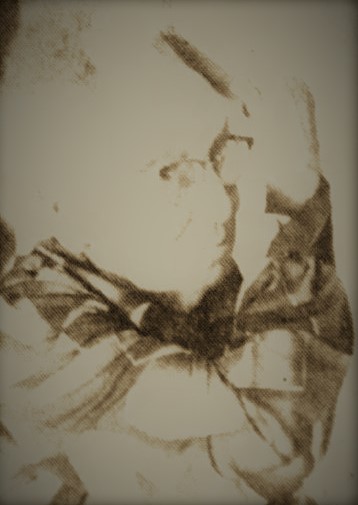
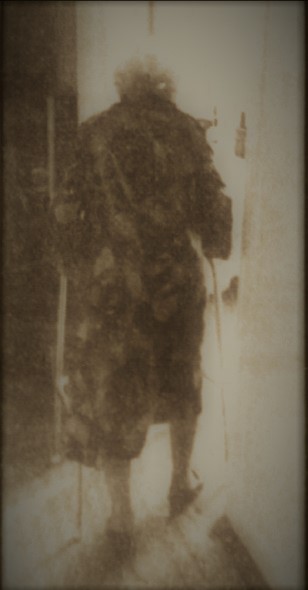
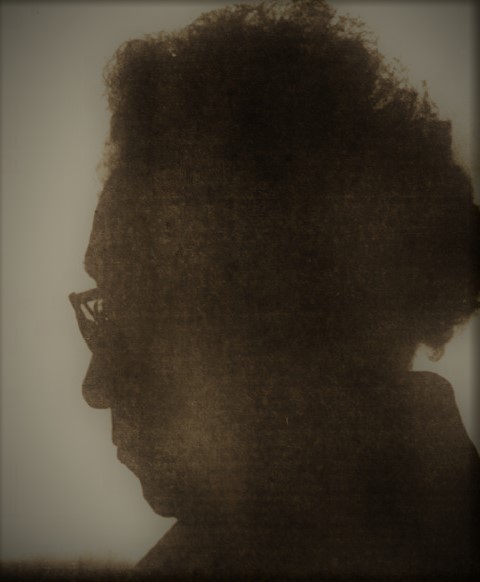
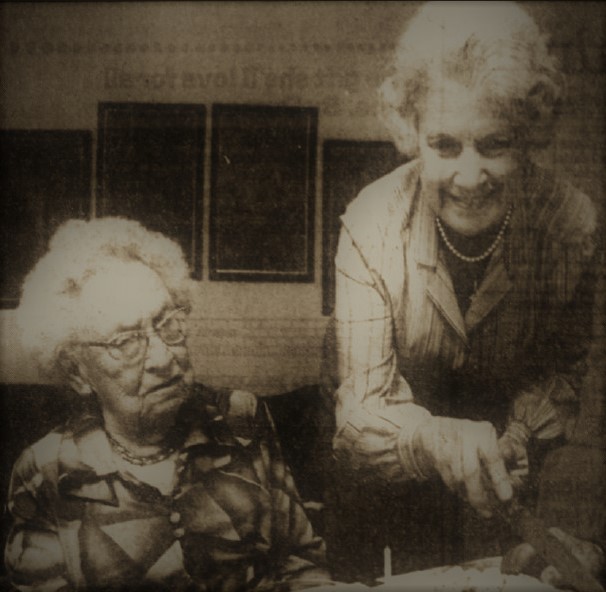
Relationship between Jennie “Jane” May Hoagland & Robin Melissa BOSWORTH:
Jennie “Jane” May Hoagland (1881 – 1986)
2nd great-aunt
***
Maria Elizabeth BLOW (1854 – 1953)
Mother of Jennie “Jane” May Hoagland
Frederick Judson “Fred” HOAGLAND (1880 – 1961)
Son of Maria Elizabeth BLOW
Helen Marie HOAGLAND (1907 – 1965)
Daughter of Frederick Judson “Fred” HOAGLAND
Frank Hunt BOSWORTH (1933 – )
Son of Helen Marie HOAGLAND
Tenderly Rose-Robin Melissa BOSWORTH
The daughter of Capt. Frank Hunt BOSWORTH
Dundee Pioneer Charles Blow Member of the Old-Time Jimmy-Pipers Club at age of 94

4 May 1915, Decatur, Illinois
The text insert located on the lower left-hand corner of this advertisement, just under the drawing illustrating Charles Blow, states:
“This is Charles Blow of Dundee, Ill., who tips the scales at 94 years. Mr. Blow is today, and always has been, a man who smoked his pipe liberally–and enjoyed it mightily. Mr. Blow qualifies for the Prince Albert “old-time jimmy-pipers club” and has been elected to full-fledged membership. We would like to hear from other old-time smokers.”
Charles Blow was married to Lucy Flude Knott
“Wings of Angels”
https://www.ancestry.com/family-tree/person/tree/5680810/person/-1416081224/facts
Charles BLOW (1820 – 1919)
My 3rd great-grandfather
Maria Elizabeth BLOW (1854 – 1953)
daughter of Charles BLOW
Frederick Judson “Fred” HOAGLAND (1880 – 1961)
son of Maria Elizabeth BLOW
Helen Marie HOAGLAND (1907 – 1965)
daughter of Frederick Judson “Fred” HOAGLAND
Frank Hunt BOSWORTH (1933 – )
son of Helen Marie HOAGLAND
Tenderly Rose-Robin Melissa Bosworth
the daughter of Frank Hunt BOSWORTH
Samuel Campbell Hoagland 1855–1940, Early Elgin, Illinois, Livery and Transportation
“Sam was a prudent businessman who maintained a card index of every animal and piece of equipment. He retired in 1913. He owned 26 horses, 11 full-sized closed carriages, 3 hearses, 3 fancy conveyances, opera hacks, pallbearer wagons, two seat carriages and one-seat light driving rig.”
Wagons to taxicabs: 4 generations of Hoaglands haul Elginites by E. C. Mike Alft
Samuel Campbell Hoagland was my great great grandfather.
son of Samuel Campbell HOAGLAND
daughter of Frederick Judson “Fred” HOAGLAND
son of Helen Marie HOAGLAND
the daughter of Capt. Frank Hunt BOSWORTH II
Samuel Campbell Hoagland was born on December 22, 1855, in Elgin, Illinois. His parents were Zephaniah and Celia (Sears) Hoagland.
Sam married Maria Elizabeth Blow on June 25, 1879 in his hometown. According to family history notes by my grandmother, the couple was married at the residence of D.R. Jencks, Rev. D.B. Cheney officiating. However, Robert B. Mogler, another Sam Hoagland descendant, has stated their marriage certificate shows they were married a the First Baptist Church in Elgin. They had two children during their marriage, a son Frederick Judson “Fred,” was born on June 12, 1880, and a daughter, Jennie May “Jane,”born on November 14, 1881. Both children were born in Elgin.
Hoaglands
For more than a century, through four generations and changing modes of transportation, the Hoaglands hauled freight and people around Elgin.
Zephania Hoagland’s aunt and uncle pioneered east of town in Hanover Township in 1837. Born in Steuben County, New York, Zeph also was an early arrival here, but didn’t settle down in Elgin until he had tried his luck as a’49er seeking gold in California. Zepbania became a teamster whose horse-drawn wagon carried goods around the little mill town that grew into an industrial city during his lifetime.
Zeph’s son, Sam C. Hoagland, was born in Elgin in 1855. He worked for his father and then purchased his own one-horse express wagon in 1876. The livery (a stable keeping horses and vehicles for hire) he bought four years later became one of Elgin=s largest. He also ran buses to and from the factories and supplied a big Tally-Ho wagon for picnics.
Sam Hoagland was a prudent businessman who maintained a card index on the cost of every animal and piece of equipment in his stable. His records indicated what each horse had eaten and earned. He also knew each one’s habits. When a drummer had rented a rig to go to Dundee, be complained on returning that the horse had balked. Sam charged him more than originally agreed because the rig had gone all the way to Algonquin. How did Sam know? Old Betsy never stalled except on the Algonquin bill.
Some customers desired well-dressed drivers as well as a carnage. In the Hoagland wardrooms were 15 outfits of fur coats, gloves, and caps. There were enough neatly brushed silk hats to costume a half-dozen minstrel shows.
By the time be retired in 1913, Sam Hoagland owned 26 horses, 11 full-sized closed carriages, three hearses, three fancy conveyances, opera hacks, pallbearer wagons, two-seat carriages, picnic wagons, and one-seat light driving rigs of all descriptions.
Sam’s son, Fred J. Hoagland, was born in Elgin in 1880 and joined the business after leaving high school. When the livery closed, he adapted to the motor age and started the Hoagland Taxicab Company with three Model-T Fords and two Reos, all black. Meters were introduced in 1919, and the original fare they tallied was 25 cents for the first mile and 10 cents for each succeeding two-fifths mile. After World War I, Fred began buying Yellow cabs manufactured in Chicago by John Hertz, and the firm’s name was changed to the Elgin Yellow Cab Company.
The early Yellows had tonneaus in which only the passenger compartment was enclosed. The driver was in the open air, exposed to rain and snow. After Hertz sold out to General Motors, Hoagland switched to Chevrolets.
Two-way radios, which reduced cost and response time, were introduced in 1946. At its operating peak in the 1950s, Elgin Yellow had about 60 full and part-time employees, including three full time dispatchers, two telephone operators, maintenance shop repairmen, and drivers. The firm had 18 cars on the streets in the summer and 25 in the winter. The cars averaged about 7,000 mile per month. Eight new cars were purchased each year. By the end of the decade, Elgin Yellow had switched from Chevrolets to Checkers made in Kalamazoo, Michigan.
Fred’s son, Charles Hoagland, was born in Elgin in 1913. While still a boy, he learned the ropes by guiding new drivers around the city. He eventually became a partner in the business, withdrawing in 1964, but was driving his private livery until he reached the age of 70.
—–
ElginHistory.com – Elgin: Days Gone By – E. C. Alft
At the age of 84 years old, Sam died and was buried, alongide his wife, Maria, in Elgin’s Bluffside Cemetery. The following was transcribed by my grandmother, Helen Marie Hoagland who was his granddaughter, from a newspaper article at the time of his death. She did not state the source of the death notice:
